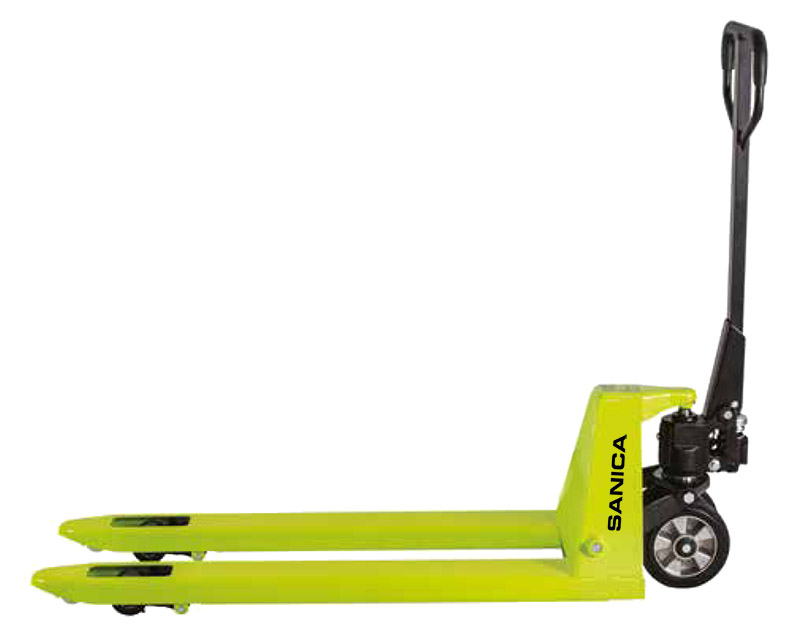MANUAL PALLET TRUCKS

Operating Principle
Carrying
Lifting Position

Cornering Safety
Safe driving mode when loading or operating at a cornering.

Anti-Skid
Sanica Forklifts are equipped with an anti-skid system.
Lowering Position
Technical Features
1. The pallet truck’s chassis is made of a metal sheet of 4 mm in thickness.
2. The forks are supported by profiles. The reason is to eliminate the bending that may happen on the forks and, support the hydraulic system.
3. There is a strengthened hydraulic system intended to support the carrying capacity of the pallet ruck (2000-2200-25000 kgs).
4. There is a protective central valve mechanism that automatically turns off the system when the hydraulic system is overloaded.
5. The oil that is used in the hydraulic system is Shell Tellus 27 or Shell Tellus 37 motor oil. The oil capacity of the hydraulic system is 200-250 grs.
6. There is a grinded piston conforming to the European standards. This prevents the felts from being worn and, increases the useful life of the hydraulic system.
7. There are two types of tires used in a pallet truck:
a) Polyurethane Rubber Tires Used to operate on hard, even floors. Not collapsed when operating under full road.
Ball bearings inside the tires are of self-lubricating and covered. Not affected by corrosion (dust, rust, dirt etc.), not require lubricating. There are double ball bearings inside each of the tires.
b) Polyamide Tires (Black/White) Used to operate on hard and uneven floors. Recommended using in hygienic environments. Not affected by corrosion (dust, rust, dirt etc.), not require lubricating.
There are double ball bearings inside each of the tires.
8. The length of the pulling/pushing lever is at standards and, the controlling stick is positioned on the lever according to the occupational security.











